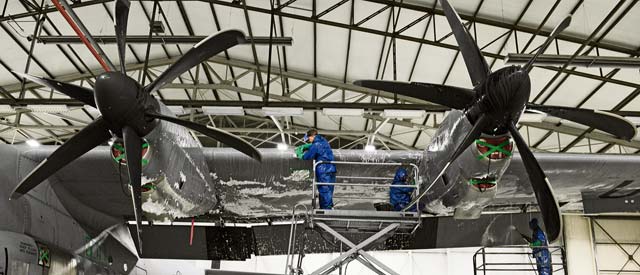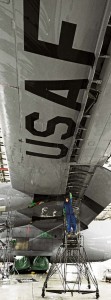
What is an Air Force without a mission? What is a mission without aircraft? And what is an aircraft without its maintainers?
Airmen from the 86th Maintenance Squadron and the 86th Aircraft Maintenance Squadron wash C-130J Super Hercules aircraft twice a month to prevent corrosion and clear the aircraft of any foreign object damage.
By keeping them clean, it ensures the aircraft are capable and ready for any and all mission operations.
“Keeping major structural components clean helps improve the lifespan of aircraft thus keeping them in the air longer,” said Staff Sgt. Joshua Schoerner, 86th MXS aerospace maintenance craftsman. “Our mission is maintenance, and this is one of our most important missions that tends to be overlooked.”

Every C-130J Super Hercules on base is washed every 180 days as a preventative measure against the elements. For each of these washes, the maintainers have a 10-man rotation per shift that are allotted a 24-hour time period to wash, scrub and re-grease the aircraft.
“What we do is important,” said Airman 1st Class Enoch Wentland, 86th MXS crew chief. “We check and wash every inch of the aircraft and clean all the gears. This helps us identify any damage that may have been missed.”
According to the maintainers, even with something as simple as washing the aircraft there are many physical and chemical hazards that could potentially endanger their safety.
“Safety is absolutely paramount,” Schoerner said. “We brief our Airmen again and again, so before they even begin to think about touching the aircraft, they’re thinking of what the proper equipment is and what they need to be aware of when they are washing the C-130s.
“These chemicals can be dangerous,” he added. “If it gets in your eyes or on your skin, it can cause a lot of harm. That’s why we take it one step at a time and take every precaution to prevent making mistakes.”
Though sometimes overlooked, aircraft washing is a vital part of the Air Force mission. If the aircraft were not washed they would begin to corrode and cause damage, yielding it unsafe to operate.
Schoerner said maintainers continue to conduct thorough checks and washes to extend the effectiveness of the aircraft by years as well as provide a good looking bird for the KMC.







